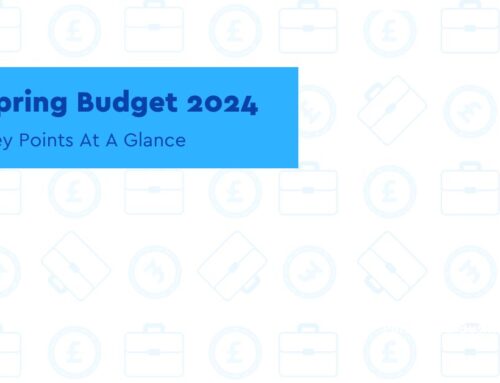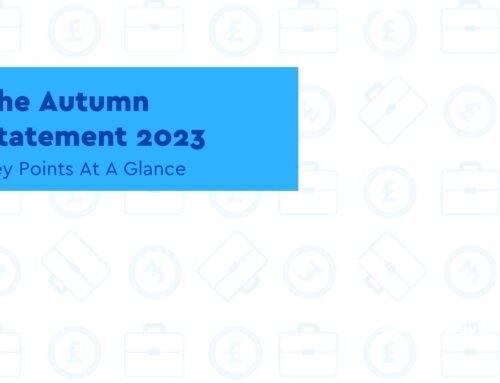PM announces 1.25% National Insurance hike
Key Points
- PM unveils £12bn-a-year tax rise to pay for NHS and social care
- From April 2022, national insurance contributions rates and taxes on dividends will go up by 1.25 percentage points
- Employers will also need to contribute an additional 1.25% (employer national insurance is currently 13.8%)
National Insurance contributions will rise by 1.25 percentage points to pay for the social care system in England, with the levy expected to raise about £12bn.
This includes £2.2 billion a year for Scotland, Wales and Northern Ireland, as tax changes affect the whole of the UK.
Prime Minister Boris Johnson said the costs of the programme will be split between individuals and businesses and ‘those who earn more will pay more’.
How it is funded
A new UK-wide 1.25% “health and social care levy” will come in from April 2022, based on national insurance contributions. It will be paid by working adults, including people over the state pension age (unlike normal national insurance, which is not paid by pensioners).
Initially from April 2022 national insurance contributions rates will go up by 1.25% percentage points while taxes on dividends will also increase by 1.25% to ensure the self-employed do not try to avoid the new levy.
But from April 2023, once tax systems have been updated, the levy will be separated, so that the levy will appear as a separate line on pay slips. At this point working adults above state pension age will start contributing.
Big businesses will pay the most of the extra revenue coming from the increase to employers’ NICs, with 70% of the money coming from the biggest 1% of employers – those with more than 250 employees.
40% of all businesses (mostly small businesses) will not have to pay anything extra.
New levy will “share the costs” between individuals and businesses
Speaking in the House of Commons, Johnson said: ‘Some will ask why we don’t increase income tax or capital gains tax instead, but income tax isn’t paid by businesses so the whole burden would fall on individuals – roughly doubling the amount the total taxpayer is expected to pay.
‘The total revenue from capital gains tax is £9bn this year – our new levy will share the costs between individuals and businesses and everyone will contribute according to their needs.’
From October 2023, people with assets of between £20,000 and £100,000 will still contribute to their adult care costs, while people with assets of under £20,000 will not pay for any of their care costs. The maximum cap on individual costs will be £86,000
How much more you’ll be paying
The rates on “class one” contributions which employees pay on earnings in excess £9,568 a year will rise to 13.25% from 12%, while the “upper earnings rate” which kicks in on earnings of more than £50,270 a year will increase to 3.25%, from 2%.
The self-employed pay slightly lower rate “class four” contributions. The rate they pay will rise to 10.25%, from 9% on annual earnings of more than £9,568 and at 3.25% on anything more than £50,270, up from 2%.
Some lower-earning freelancers pay “class two” NI annual earnings of £6,515 up to the class four threshold, at a rate of £3.05 a week.
The rate on employer contributions paid by companies will rise to 15.05%, up from 13.8%.
How National Insurance contributions will change with a 1.25% increase
| Pay Example | Current Contribution | New Contribution |
| £10,000 salary | £52 paid now | £57 with 1.25% increase – £5 extra each year |
| £20,000 salary | £1,252 paid now | £1,382 with 1.25% increase – £130 extra each year |
| £30,000 salary | £2,452 paid now | £2,707 with 1.25% increase – £255 extra each year |
| £40,000 salary | £3,652 paid now | £4,032 with 1.25% increase – £380 extra each year |
| £50,000 salary | £4,852 paid now | £5,357 with 1.25% increase – £505 extra each year |
| £75,000 salary | £5,379 paid now | £6,197 with 1.25% increase – £818 extra each year |
| £100,000 salary | £5,879 paid now | £7,009 with 1.25% increase – £1,130 extra each year |
National Insurance: Behind the figures
Under the current system, you pay 12% on your earnings between £9,568 and £50,270, and 2% on any income above £50,270.
A typical basic rate taxpayer earning £24,100 will pay £180 a year, or £3.46 per week. A typical higher rate taxpayer earning £67,100 – in the top 15% of earners – will pay £7.15 a week.
Additional rate taxpayers (those paying the highest rate) will contribute 20% of the revenue, even though they are just 2% of taxpayers.
Higher rate taxpayers – 14% of the total – will pay half the revenue.
6.2 million people earning less than £9,568 will not have to pay.
You pay National Insurance contributions to qualify for certain benefits and the State Pension. You pay mandatory National Insurance if you’re 16 or over and are either:
- An employee earning above £184 a week
- Self-employed and making a profit of £6,515 or more a year
You may be able to pay voluntary contributions to avoid gaps in your NI contributions. You need a National Insurance number before you can start paying National Insurance contributions.
If you earn between £120 and £184 a week, your contributions are treated as having been paid to protect your National Insurance record. If you’re employed, you stop paying Class 1 National Insurance when you reach the State Pension age.
If you’re self-employed you stop paying:
- Class 2 National Insurance when you reach State Pension age
- Class 4 National Insurance from April 6 (start of the tax year) after you reach State Pension age
What happens in the rest of the UK?
The Westminster government only controls the situation in England. In Wales, no-one who is eligible for care at home is expected to pay more than £100 a week.
The systems in Northern Ireland and Scotland are different for support at home and residential care.
In Northern Ireland, no-one over the age of 75 pays for home care.
Scotland provides free personal care for people who are assessed as needing support at home, whatever their age. In Scottish care homes, people get free care if they have savings or assets of less than £18,000.
Those with savings and assets of between £18,000 and £28,750 have to fund part of their care. People with more than that have to fund their own care, apart from a £193.50 a week contribution towards personal care and £87.10 a week towards nursing care.
How to cut your National Insurance bill
If your company offers a salary sacrifice scheme for pension contributions, then you can slash your National Insurance bill by paying more into your pension.
A salary sacrifice scheme is where you give up a portion of your salary in exchange for a non-cash benefit – such as pension contributions.
Chancellor announces date for Autumn Budget
Key Points
- A three-year spending review will also fall on the same date
- The chancellor said core departmental spending, covering welfare and services, would increase from 3% to 4% from next April
Rishi Sunak has given the date of October 27 for his Autumn Budget, announcing plans to support public services and revive the economy with £140bn of extra spending.
Setting the scene for more expansive and interventionist policies than seen under recent Conservative administrations, the chancellor said he wanted to balance extra cash for public services with “keeping the public finances on a sustainable path”.
Paul Johnson, the head of the Institute for Fiscal Studies, said he welcomed “a return to multi-year budgeting”. However, it was unlikely the autumn budget would match the impact of announcements on Tuesday to reform social care and boost health spending with tax rises to raise £14bn, he said.
Cabinet ministers have already spent several weeks preparing to battle with Sunak over their future budgets, ahead of his official announcement of a three-year spending review, which will also fall on 27 October.
Some departments have seen their budgets cut by up to 40% over the past decade, and the fear inside Whitehall is that previously “ringfenced” areas of health, schools and defence will take the lion’s share of any extra cash – leaving little for justice, transport and international aid.
Public service spending will now increase at an average real rate of 3.2% a year over the next three years, compared with a 2.1% rise under previous plans.
“That will fund a substantial increase in health and social care funding, but will still leave overall public service spending £2bn to £3bn lower each year than what the government was planning to spend pre-pandemic,” Johnson said.
The chancellor said core departmental spending, covering welfare and services, would increase from 3% to 4% from next April. “By 2024-25 that means that core departmental spending will be £140bn more per year in cash terms than at the start of the parliament,” he added.
Sunak is understood to be confident that a £20-a-week cut to universal credit payments next month and the ending of the furlough scheme on 30 September will have little impact on the economic outlook.
Some economic forecasters have warned that unemployment could rise from 4.7% to above 5% later this year as furloughed workers find themselves out of work.
There had been speculation that the budget would be delayed until next year, allowing the economy to return to pre-pandemic levels of activity before setting tax and spending targets each year until 2024.
Some Treasury officials were concerned that the government’s economic forecaster, the Office for Budget Responsibility (OBR), was unlikely to agree with a forecast by the Bank of England that the pandemic had made only a modest dent in the long-term outlook for the economy, forcing Sunak to limit his spending plans.
It is understood that the OBR is preparing to admit it was overly gloomy in its forecasts in March when it said the hit to the economy was the equivalent of 3% of annual GDP. Later assessments by officials at the BoE have reduced the pandemic’s negative effect to just 1% of GDP.
Small businesses can still earn a £3,000 cash boost by hiring an apprentice
Key Points
- Applications close on November 30, 2021
- An apprentice must have started working for you between April 1 and September 30
- To receive the full £3,000 payment, the apprenticeship will need to last for at least 12 months
Time is running out for small businesses to apply for a £3,000 cash boost for hiring an apprentice.
Businesses already receive £1,000 for hiring an apprentice. The extra incentive gives employers an opportunity to earn a total £4,000 if they hire an apprentice between April and September.
The government announced the extra funding as part of the Budget in March, with the aim of helping ‘employers invest in the skilled workforce they need for the future’.
How do you apply for the apprenticeship incentive scheme?
If you’ve hired an apprentice between 1 April and 30 September 2021, you can apply for a £3,000 new apprentice payment from the government.
The government counts an apprentice as someone aged 16 to 18, or someone aged 19 to 24 who has been in care of their local authority or has an education, health and care plan.
To receive the full £3,000 payment, the apprenticeship will need to last for at least 12 months. You’ll need to set up an apprenticeship service account to apply for the funding.
When does the scheme end?
Applications close on 30 November 2021. To be eligible for the incentive, your apprentice must have started working for you between 1 April and 30 September, while their apprenticeship must officially start before 30 November 2021.
For example, if someone started working for you in August and then started an apprenticeship in October, you’ll still be able to apply for the funding.
If your apprentice joined before 1 April 2021, you won’t be able to receive the extra £3,000. However, you could still benefit from the £1,000 all businesses receive when they hire an apprentice, if you haven’t already.
What can you spend the money on?
There are no rules on how employers spend the money. However, the government suggests that it’s used to cover apprentice costs such as travel expenses, equipment, or uniform.
When do you get paid?
The government says it could take up to 80 days to verify the details of the apprenticeship – they may also contact your business for more details.
For each apprentice you hire within the dates of the scheme, you’ll receive £1,500 after they’ve completed 90 days of their apprenticeship, and another £1,500 after they’ve completed a full year.
Payments are made on the 14th working day of the month and you can check when you’re due to be paid on your apprenticeship service account.
Helping employers and the workforce to recover from the pandemic
The £3,000 cash incentive is part of the government’s ‘Plan for Jobs’, which was launched last year. It aims to create more jobs and bring the education system closer to employers.
The Chancellor, Rishi Sunak, said the apprenticeship cash boost would improve opportunities to stay in and find work for young people who have been ‘hit especially hard’ by the Covid-19 pandemic.
Official Universal Credit figures show that 450,000 16 to 24-year-olds were listed as ‘searching for work’ in August – nearly double the figure in March 2020.
Minister for Apprenticeships and Skills Gillian Keegan added that the cash boost will encourage businesses to invest in their future workforce, giving them the ‘skilled talent pipeline they need to thrive’.
What are the benefits of employing an apprentice?
Alongside the financial advantages explained above, there are many reasons why hiring an apprentice could be a positive step for your small business.
Here’s an overview of some of the key benefits:
- You can teach people on the job– helping apprentices to to develop skills unique to your small business[Text Wrapping Break]
- Apprentices are often highly motivatedwith an appetite to learn and one eye on gaining long-term employment[Text Wrapping Break]
- You can give back to young people and the local community– this increases your chances of having a loyal and dedicated workforce[Text Wrapping Break]
Business rates system an ‘indefensible’ disincentive to invest, says FSB
Key Points
- The FSB has written to the Government to highlight steps that should be taken to protect small businesses, spur economic recovery, and secure green investment
- Proposals include removing a quirk in the system that causes a firm operating across two premises to be charged rates even if its total valuation should see it qualify for relief
The UK’s largest business group has written to the Government to highlight steps that should be taken to protect small businesses, spur economic recovery, and secure green investment as part of a business rates review that is set to move forward in the autumn.
In a letter to ministers, Blackpool-based Federation of Small Businesses (FSB) national chair Mike Cherry describes the tax as “regressive and outdated” and encourages policymakers to:
- Stop penalising investments aimed at improving sustainability and working conditions for employees, such as solar panels, insulation, ventilation, recycling facilities and bike sheds – such additions typically cause a property’s value, and by extension its rates bill, to increase.
- Exempt all childcare providers from business rates to bring support across England in line with that provided in Wales and Scotland.
- Aid high street recovery by accelerating reforms that have seen some of the smallest businesses removed from the rates system by increasing the threshold for 100% small business rates relief to £25,000.
- Remove a quirk in the system that causes a firm operating across two premises to be charged rates even if its total valuation should see it qualify for relief.
- Ensure that efforts, welcomed by the small business community, to conduct more frequent revaluations for business rates purposes are light-touch and transparent, and do not prevent valid appeals.
Mike Cherry said: “The Government is absolutely right to overhaul a business rates system which often lets online retailers operating from remote warehouses off the hook whilst punishing small businesses that serve as community hubs.
“This is a levy that hurts small firms trying to do the right thing: If you put solar panels on the roof to aid your transition to net zero, or install ventilation to support the wellbeing of your staff, the Valuation Office Agency will advise your local authority that you should be paying more in business rates.
“As we look to aid the small business community’s transition to net zero, and employee safety and wellbeing as we come out from the pandemic, this simply cannot be the right approach to taxation.
“Instead, we should be aiming to take more small firms out of the system altogether, not least our childcare providers who have done so much to support families throughout an incredibly tough 18 months and are finding that making ends meet is an increasingly precarious business.”
He added: “Renewed efforts to ensure that rates bills are based on fair valuations are welcome and much needed – the more we can move to rolling up-to-date valuations, the more we can ensure this is a fair system fit for the digital age.”
Weekly HMRC, Gov’t and tax updates
Inflation could force rates rise next year, says Bank of England
Interest rates might need to rise next year if the recovery continues and inflation gets stickier, a Bank of England policymaker has said.
Michael Saunders, an external member of the Bank’s monetary policy committee and the sole rate-setter to vote last month to scrap the final scheduled £50 billion of quantitative easing, said that the economy probably had recovered to pre-pandemic levels of GDP. Inflation is racing ahead, with the Bank forecasting the increase in consumer prices to peak at 4% before the end of the year, twice its target mandate.
“As to when I think interest rates might rise, that would depend on the economic outlook,” he said. “If the economy continues to recover and inflation shows signs of being more persistent, then it might be right to think of interest rates going up in the next year or so. But that is not a promise and depends on economic conditions.”
Dismayed business groups warn tax rises will harm recovery
Business groups reacted with dismay to the government’s national insurance hike and surcharge on dividend income to boost health and social care spending from next April, calling it a tax on jobs and a blow to the economic recovery.
The British Chamber of Commerce (BCC) said the extra financial burden from higher tax charges ignored the damage suffered by thousands of small businesses over the last 18 months.
In a separate attack on the tax increases, the Institute of Directors accused the government of an opportunistic ambush, “exploiting public sentiment at the expense of some of the most productive and entrepreneurial segments of the economy”.
Boris Johnson said a 1.25 percentage point increase in employee and employer national insurance would contribute towards a £14bn annual increase in spending on health and social care, to bring down waiting lists and protect vulnerable people from using all their savings to pay social care bills.
How to claim post-Brexit VAT refunds
HMRC has updated VAT notice 723A to reflect changes to the VAT refund process, relating to businesses located in the UK incurring EU VAT. UK businesses can potentially reclaim VAT incurred in the EU since January 1, 2021.
The window for reclaiming EU VAT for earlier periods closed on March 31, 2021. Following the end of the transitional period, the UK must now use the existing processes for non-EU businesses.
The exact method varies by EU country – further information can be found on the EU Commission’s website. UK businesses may need to provide a certificate of status to get a refund.
Get In Touch
At Morgan Reach, we understand every business needs a little help now and again-especially when it comes to the financial side of things. Therefore, to help our clients and visitors we endeavour to cover as much of the business news as possible. If you are self-employed or run a business and need assistance and advice on how these news could make a difference to you or your business, feel free to get in touch with the experts at Morgan Reach. Our business growth experts at Morgan Reach will guide you through what support is available for you or your business as well as the latest news that may affect you.







